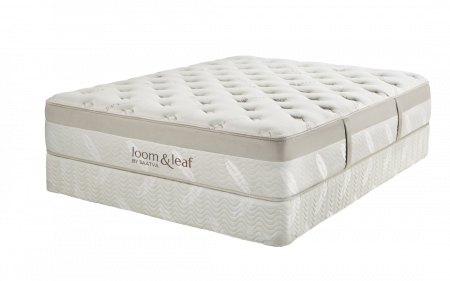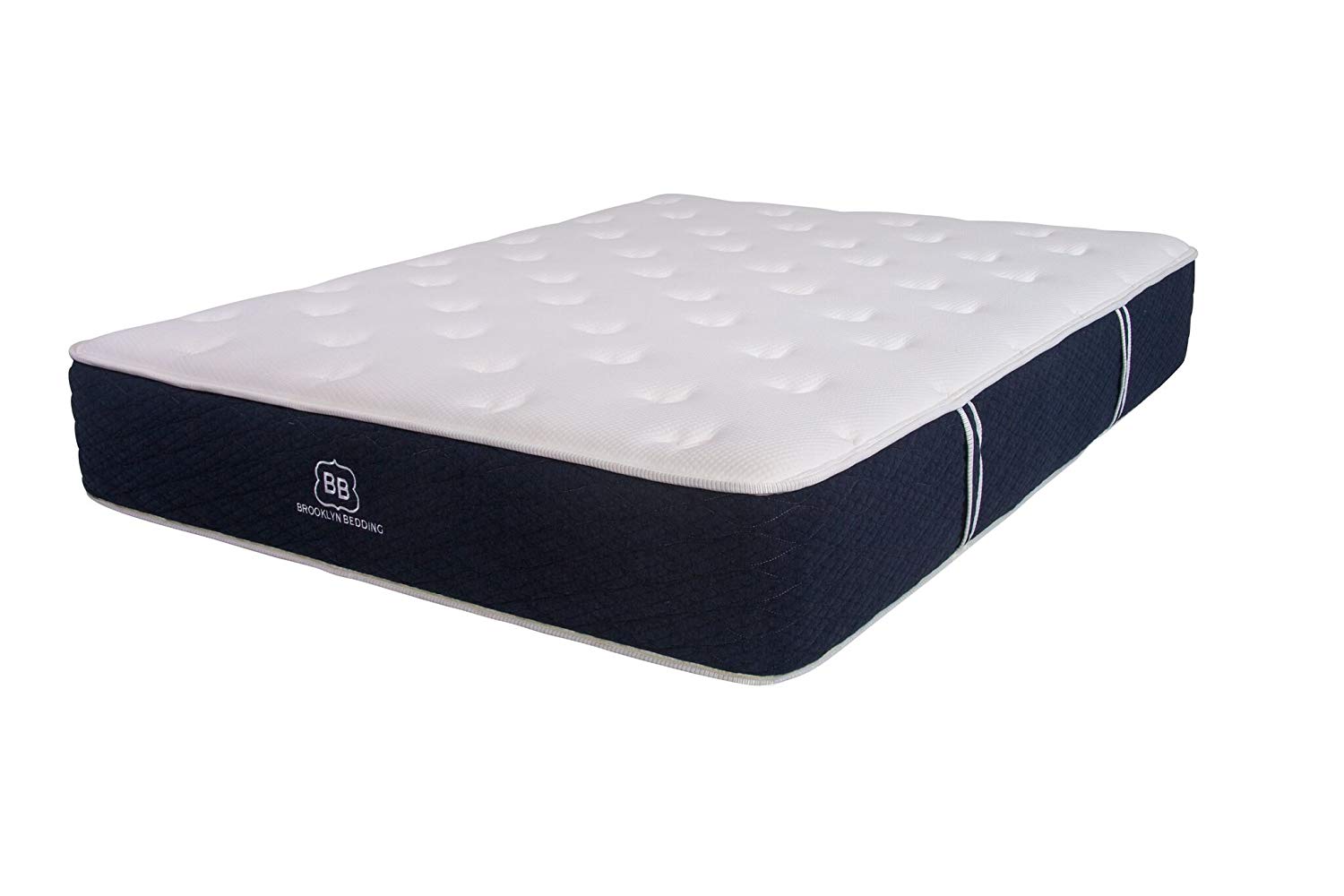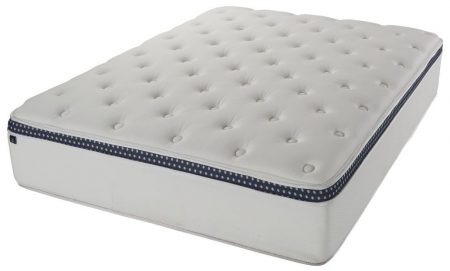The Loom & Leaf by Saatva is a memory foam mattress that conforms closely to pregnant sleepers. Comfort layers of gel memory foam and standard memory foam provide ample softness, and a layer of foam quilted into the organic cotton cover offers extra cushioning.
A high-density polyfoam base layer also helps the bed maintain an even, supportive surface with minimal sagging in the center. This can help reduce back pain and pressure points for pregnant women.
The Loom & Leaf is available in two firmness options, ‘Medium’ (5.5 on the 1-10 firmness scale) and ‘Firm’ (8), to accommodate pregnant women with different body types and feel preferences. The cotton cover allows the bed to sleep noticeably cooler than most all-foam mattresses, while the sleep surface absorbs and isolates motion transfer very well. The mattress is also virtually silent when bearing weight.
Like other mattresses from Saatva, the Loom & Leaf qualifies for free White Glove delivery in the contiguous U.S. This service includes in-home mattress assembly and old mattress removal; most competing manufacturers charge customers an extra fee of at least $100 for White Glove delivery. The Loom & Leaf is also backed by a 365-night sleep trial and a lifetime warranty, both of which are longer than average.
The Bottom Line.
The construction of the Loom & Leaf offers an optimal sleep experience for pregnant women, relieving aches and pains with soft layers of memory foam, and cooling hot flashes with gel foam and organic cotton. With a high-density base and multiple firmness settings, the Loom & Leaf ensures long-lasting, comfortable support during pregnancy and beyond for a wide range of sleepers.





